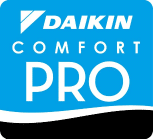
Ductwork is an integral part of any heating, ventilating, and air conditioning (HVAC) system, as it is responsible for the efficient and even distribution of conditioned air throughout your living spaces. A well-designed and properly maintained ductwork system enhances the comfort of your home and contributes to improved energy efficiency, reducing your monthly energy bills. However, homeowners often overlook the significance of ductwork and fail to recognize the impact that faulty or improperly maintained duct systems can have on their overall living experience.
In this informative guide, Total Home Services of Utah aims to enlighten homeowners about the significance of ductwork design and maintenance, shedding light on the role these systems play in improving indoor comfort and optimizing energy usage. By understanding the basics of ductwork design and the importance of routine maintenance and repair, homeowners can better appreciate the value of these crucial components in their overall HVAC system and make informed decisions about their upkeep.
Fundamentals of Ductwork Design
An efficient and effective ductwork system begins with proper design. The design of your ductwork affects the performance of your HVAC system and directly impacts the comfort of your home. Key factors to consider in ductwork design include:
- Layout and sizing: Proper duct sizing and layout ensure that each room receives the right amount of conditioned air, maintaining an even temperature throughout the house.
- Insulation: Insulating your ducts reduces heat loss or gain and prevents condensation from forming, resulting in energy savings and improved comfort.
- Sealing: Air leaks can significantly reduce the efficiency of your HVAC system. Proper duct sealing helps maintain air pressure and keeps conditioned air from escaping.
Importance of Regular Duct Cleaning
Over time, dust, debris, and other contaminants can accumulate within your ducts, potentially impacting your HVAC system’s performance and indoor air quality. The importance of regular duct cleaning extends beyond aesthetics and includes:
- Improved indoor air quality: Clean ducts mean fewer allergens and pollutants circulating in your home.
- Enhanced energy efficiency: Accumulated debris can restrict airflow, causing your HVAC system to work harder and consume more energy. Regular duct cleaning helps maintain optimum efficiency.
- Prolonged lifespan of your HVAC system: Clean ducts help keep your system functioning smoothly, reducing the likelihood of breakdowns and costly repairs.
Recognizing the Signs Your Ductwork Needs Attention
Awareness of the signs that your ductwork may require maintenance or repair can help prevent long-term problems and maximize the effectiveness of your HVAC system. Warning signs to watch out for include:
- Uneven room temperatures: If certain areas of your home are consistently hotter or cooler than others, your ductwork may be the culprit.
- Reduced airflow and comfort: A noticeable decrease in airflow could indicate a blockage or leak in your ducts.
- Unusual noises: Clattering or whistling sounds from your ducts could signify loose connections or other issues that need attention.
- Increased energy bills: A sudden spike in your energy consumption could be due to compromised ductwor,k causing your HVAC system to work harder.
Best Practices for Ductwork Maintenance and Preservation
Taking proactive steps to maintain your ductwork can ensure long-lasting efficiency and comfort. Adhering to these best practices can help preserve the integrity of your ductwork system:
- Schedule routine maintenance: Having your HVAC system inspected, cleaned, and serviced by a professional on a regular basis will help spot potential issues before they become costly problems.
- Regularly change your air filter: Replacing your air filter every 1-3 months will help keep your ducts clean and maintain optimal airflow.
- Inspect and seal ductwork: Periodically check for air leaks, particularly at joints and connections, and use a UL-Listed mastic sealant or specialized HVAC tape to ensure airtight seals.
- Consider a professional duct cleaning: Hiring a professional to clean your ducts every 3-5 years can help maintain optimal air quality and system performance.
Conclusion
Understanding the importance of proper ductwork design and maintenance can empower homeowners to make informed decisions about their HVAC system’s upkeep. By following best design, cleaning, and maintenance practices, you can enjoy enhanced indoor comfort, improved air quality, and increased energy efficiency in your home. Should you require expert assistance with your ductwork design or maintenance needs, our team of skilled professionals at Total Home Services of Utah is readily available to help you achieve optimal results, ensuring a comfortable and energy-efficient home. Contact our HVAC company in Salt Lake City now.




